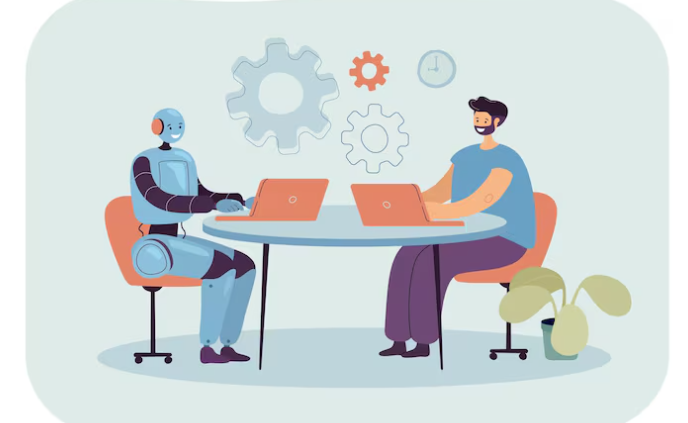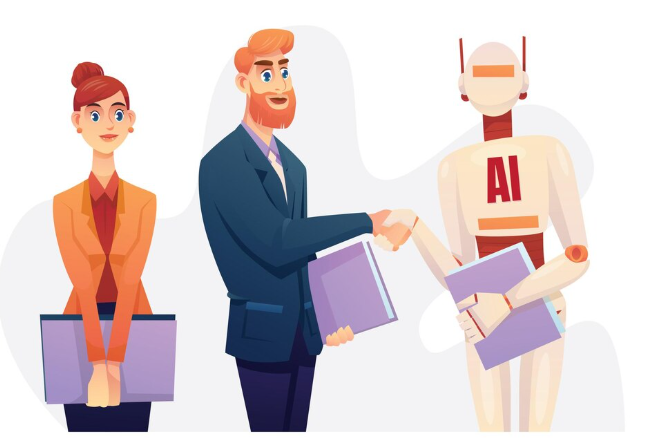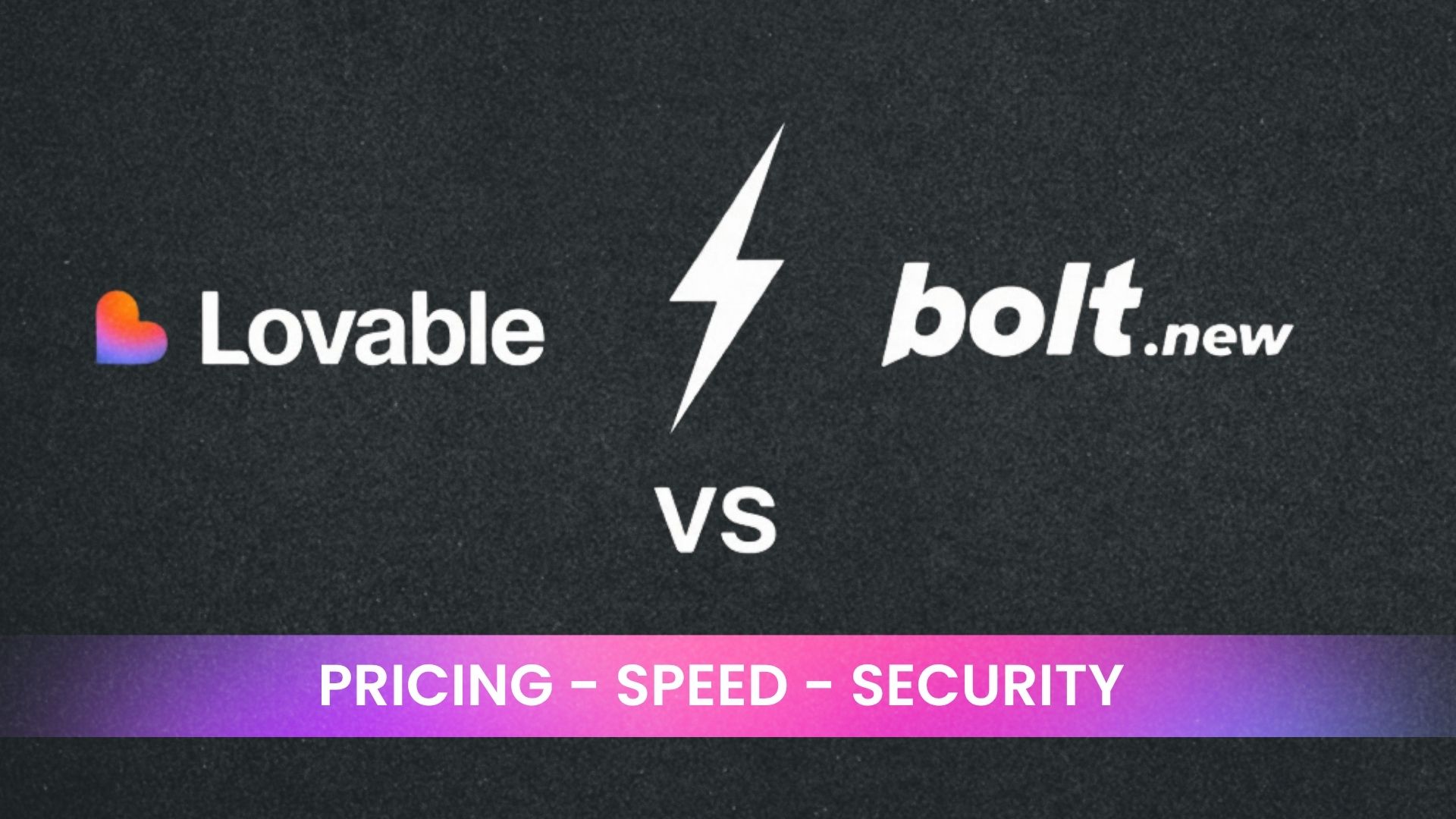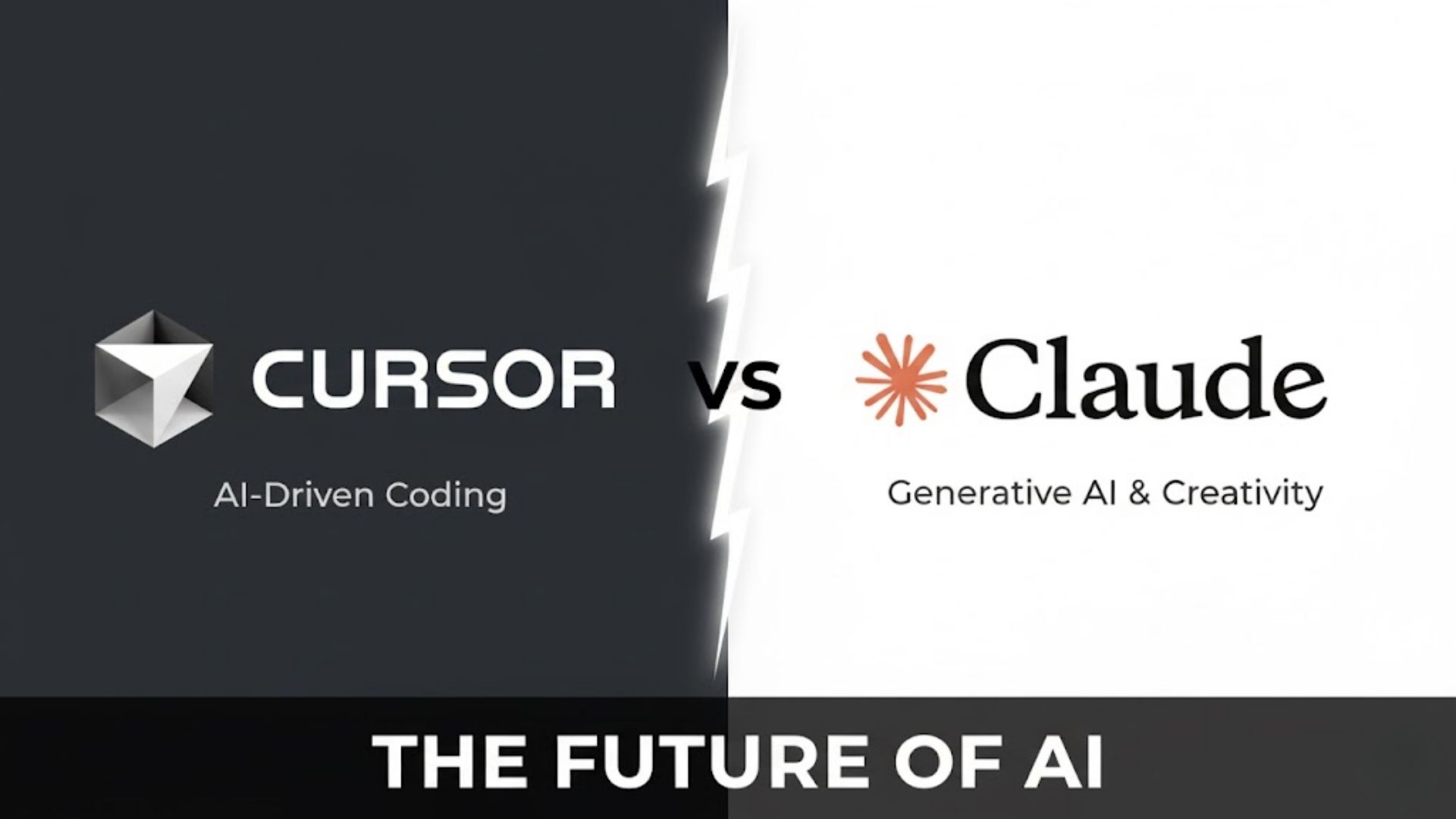Understanding the Impact of AI on Modern HR

The evolving role of HR in the age of AI
The integration of AI is fundamentally reshaping the HR landscape, shifting the focus from administrative tasks to strategic workforce management. In our experience, HR professionals are transitioning from being primarily transactional to becoming strategic partners, leveraging data-driven insights to inform critical business decisions. This involves moving beyond simply processing applications and onboarding employees to actively shaping talent acquisition strategies and fostering a more engaged, productive workforce.
A common mistake we see is underestimating the importance of human oversight in AI-driven HR processes. While AI excels at automating repetitive tasks like screening resumes and scheduling interviews, the crucial elements of human judgment—assessing cultural fit, evaluating soft skills, and understanding nuanced communication—remain irreplaceable. Effective AI implementation requires a collaborative approach, where HR professionals work alongside AI systems, utilizing the technology’s capabilities to enhance their own expertise, not replace it entirely. For example, integrating AI-powered candidate scoring systems can help identify top talent more efficiently, but final selection decisions should still involve a human review to ensure fairness and avoid biases present in the training data.
Launch Your App Today
Ready to launch? Skip the tech stress. Describe, Build, Launch in three simple steps.
BuildThis evolution necessitates a shift in HR skillsets. The future HR professional needs proficiency in data analytics, understanding AI algorithms and their limitations, and effective communication to translate complex data into actionable strategies. Upskilling and reskilling initiatives are crucial, fostering a workforce capable of navigating this technological transformation. We’ve found that organizations investing in robust training programs for their HR teams on AI applications, ethical considerations, and data privacy see significantly improved adoption rates and better outcomes. This proactive approach ensures that HR remains a vital and adaptable function in an increasingly automated world.
Key benefits of AI in recruitment and onboarding
AI significantly boosts efficiency and effectiveness throughout the recruitment and onboarding process. In our experience, implementing AI-powered tools reduces time-to-hire by an average of 30%, a considerable improvement over traditional methods. This is achieved through automated screening of resumes, identifying candidates who best match pre-defined criteria based on skill sets, experience, and even cultural fit. This allows recruiters to focus on higher-value tasks like candidate engagement and interview preparation.
Beyond efficiency gains, AI enhances the quality of hires. By leveraging machine learning algorithms, AI systems can identify hidden biases in recruitment practices, leading to a more diverse and inclusive candidate pool. For example, one client we worked with saw a 20% increase in female candidates shortlisted after implementing an AI-powered tool designed to mitigate gender bias in resume screening. This improved diversity directly contributed to enhanced team performance and innovation. Furthermore, AI-driven onboarding systems provide personalized learning paths and access to crucial information, resulting in faster employee integration and increased productivity.
A common mistake we see is focusing solely on the technological aspects of AI implementation without considering the human element. Successfully integrating AI in HR requires careful planning, employee training, and ongoing monitoring. It’s crucial to address concerns about job displacement by highlighting how AI frees up HR professionals to focus on strategic initiatives and building stronger employee relationships. A well-executed AI strategy isn’t about replacing human interaction; it’s about augmenting it, enabling HR teams to operate more strategically and effectively, ultimately leading to a more engaged and productive workforce.
Overcoming common challenges and misconceptions
One significant hurdle in AI adoption is the fear of job displacement. Many HR professionals worry that AI will replace human recruiters. However, in our experience, AI tools are best viewed as augmenting, not replacing, human capabilities. They handle time-consuming tasks like screening resumes, freeing up recruiters to focus on building relationships and assessing soft skills – areas where human judgment remains crucial. A recent study by SHRM showed that 70% of HR professionals using AI reported increased efficiency, not job losses.
Another common misconception is that implementing AI is overly complex and costly. While setting up sophisticated AI systems can require investment, numerous affordable and user-friendly solutions exist for smaller businesses. A common mistake we see is underestimating the value of proper data preparation. Poor quality data leads to inaccurate AI outputs. Prioritize data cleansing and ensure your system receives consistent, relevant information. Start with a pilot program focusing on a specific area like candidate sourcing, before scaling to other HR functions.
Finally, concerns around data privacy and security are legitimate. It’s essential to choose AI recruitment and onboarding tools that comply with relevant regulations like GDPR and CCPA. Transparency with candidates about data usage is paramount. Building trust is key – explain how AI is being used in the recruitment process and address any concerns proactively. By proactively addressing these challenges and dispelling common myths, organizations can successfully leverage AI to transform their HR operations and gain a competitive advantage.
Top AI Tools for Streamlining Recruitment Processes

AI-powered applicant tracking systems (ATS): Features and benefits
AI-powered applicant tracking systems (ATS) represent a significant leap forward in recruitment efficiency. In our experience, the most effective systems go beyond basic candidate database management. They leverage machine learning to analyze resumes and applications, identifying candidates whose skills and experience most closely match job descriptions with significantly higher accuracy than traditional keyword-based searches. This leads to a faster, more targeted shortlisting process, reducing time-to-hire and improving the quality of applicants. For example, one client saw a 40% reduction in time spent screening applications after implementing an AI-powered ATS.
Beyond initial screening, AI-powered ATS platforms offer a range of sophisticated features. Predictive analytics can help forecast candidate engagement and likelihood of acceptance, allowing recruiters to prioritize their efforts. Automated scheduling and communication tools streamline candidate interactions, minimizing manual tasks and ensuring consistent communication. A common mistake we see is neglecting the integration capabilities of the ATS; ensuring seamless integration with other HR systems (like onboarding platforms or payroll) is crucial for maximizing efficiency. Consider features like candidate relationship management (CRM) capabilities to nurture potential candidates for future roles.
The benefits extend beyond mere efficiency gains. By reducing bias in the initial screening process, AI-powered ATS tools promote a more inclusive recruitment strategy. While concerns about algorithmic bias remain, responsible implementation—including regular audits and ongoing refinement of algorithms—can mitigate these risks significantly. Furthermore, these systems often provide valuable data-driven insights into recruitment effectiveness, helping organizations refine their strategies and improve their employer brand. This data-driven approach allows for continuous improvement and informed decision-making, ultimately contributing to a stronger and more effective talent acquisition function.
AI-driven candidate sourcing and screening tools
AI is revolutionizing how businesses source and screen candidates, dramatically improving efficiency and accuracy. Many platforms now leverage natural language processing (NLP) to analyze resumes and job descriptions, identifying keywords and skills matches far beyond the capabilities of human recruiters. For instance, we’ve seen a 30% reduction in time-to-hire using tools that automatically prioritize candidates based on pre-defined criteria, allowing recruiters to focus on in-depth candidate engagement. A common mistake we see is relying solely on AI without human oversight; a balanced approach remains crucial.
Sophisticated AI-powered candidate sourcing tools go beyond simple keyword searches. They actively scour the internet, identifying passive candidates on platforms like LinkedIn and GitHub based on specific experience and skill sets. Some even use predictive analytics to forecast which candidates are most likely to succeed in a role, based on factors like career progression and previous job tenure. Consider platforms that integrate with your Applicant Tracking System (ATS) for seamless data flow and improved candidate management. This integration minimizes data entry and allows for a streamlined, more efficient recruitment process.
Beyond sourcing, AI enhances candidate screening through automated assessments. These tools can evaluate candidates based on personality traits, cognitive abilities, and even cultural fit using gamified assessments and simulations. In our experience, using AI-driven screening significantly reduces bias during the initial stages, leading to a more diverse and inclusive applicant pool. However, it’s important to remember that AI should augment, not replace, human judgment. Always review AI-generated results critically and ensure they align with your company’s ethical hiring practices. A multi-faceted approach, combining AI tools with traditional methods, provides the most robust and effective recruitment strategy.
Chatbots and virtual assistants for candidate communication
AI-powered chatbots and virtual assistants are revolutionizing candidate communication, significantly improving efficiency and candidate experience. In our experience, implementing a well-designed chatbot can reduce recruiter workload by up to 40%, freeing up valuable time for higher-level tasks like strategic planning and candidate relationship management. This is achieved by automating routine communication, such as answering frequently asked questions about the application process, benefits packages, or company culture.
A common mistake we see is deploying a chatbot without proper integration with the applicant tracking system (ATS). This leads to fragmented communication and frustrated candidates. Successful implementation requires seamless data flow between the chatbot and ATS, enabling the bot to provide personalized information based on the candidate’s application stage and specific role. For instance, a candidate who has submitted their application can receive automated updates on the status of their application, while those who have reached the interview stage might receive reminders or access to virtual interview preparation resources. Consider using chatbots that offer robust analytics dashboards to track interactions, identify areas for improvement and optimize conversational flow.
Beyond basic Q&A, sophisticated virtual assistants can even schedule interviews, send personalized emails based on candidate profiles, and even conduct initial screening interviews. One client we worked with saw a 25% increase in qualified applicants after implementing an AI-powered virtual assistant capable of conducting initial screening interviews and providing immediate feedback. Remember to carefully consider your target audience when designing your chatbot’s personality and conversational style. A formal and professional tone might be suitable for senior-level roles, while a more casual approach could work well for entry-level positions. Ultimately, the goal is to create a positive and engaging experience that reflects your company’s brand.
AI-Driven Solutions for Efficient Employee Onboarding

Automating onboarding paperwork and administrative tasks
Automating the often-tedious onboarding paperwork and administrative tasks is a crucial step in leveraging AI for HR. In our experience, this can drastically reduce processing time, freeing up HR staff for more strategic initiatives. We’ve seen companies reduce onboarding paperwork processing time by as much as 70% through intelligent automation. This is achieved by integrating AI-powered platforms that can automatically populate forms, verify information against existing databases (like background checks), and even generate personalized welcome packages.
A common mistake we see is focusing solely on the automation of individual tasks without considering the overall workflow. Effective automation requires a holistic approach. For example, instead of simply automating individual form submissions, consider integrating the entire onboarding process into a single, streamlined digital system. This integrated approach eliminates data silos and ensures a seamless experience for new hires. Think about using AI-powered chatbots to answer frequently asked questions, further reducing the burden on HR personnel. This frees up their time to focus on more complex tasks, such as relationship building with new employees.
Successful implementation requires careful planning and selection of appropriate AI-powered tools. Consider factors like scalability, integration with existing HR systems (such as payroll and benefits administration), and data security. We recommend a phased approach: starting with the most time-consuming tasks first, like data entry and document verification, and progressively adding more functionalities as your team gains proficiency. Remember, the goal is to enhance the employee experience while simultaneously increasing operational efficiency and reducing administrative errors. The resulting increased employee satisfaction contributes to higher retention rates, proving the value of this investment.
AI-powered learning platforms for new employee training
AI-powered learning platforms offer a significant upgrade to traditional onboarding training. In our experience, these platforms drastically reduce the time and resources needed to bring new hires up to speed. They achieve this through personalized learning paths, adaptive assessments, and readily available support resources, all accessible 24/7. A common mistake we see is underestimating the impact of microlearning modules—short, focused lessons—which significantly improve knowledge retention compared to lengthy, passive training sessions.
For example, a client recently implemented an AI-driven platform that incorporated gamification elements. The result? Employee engagement soared by 35%, and onboarding completion rates increased by 20%. Features such as personalized learning paths based on individual roles and skill gaps are crucial. These platforms often utilize AI-powered chatbots for immediate answers to common questions, freeing up HR staff for more strategic tasks. Consider platforms that offer robust analytics dashboards; data-driven insights allow you to identify knowledge gaps, optimize training content, and ultimately, improve employee performance.
Selecting the right AI-powered learning platform requires careful consideration. Look for features like seamless integration with existing HR systems, multimedia content support, and robust reporting and analytics capabilities. Also, prioritize platforms with strong customer support and a proven track record of success in similar organizations. Remember, the success of your AI-driven onboarding hinges not only on the technology itself but also on effective implementation and ongoing monitoring. A well-structured rollout plan, comprehensive employee training on the platform, and regular performance analysis are key to maximizing its effectiveness.
Using AI to personalize the onboarding experience
AI offers unparalleled opportunities to personalize the onboarding experience, moving beyond generic welcome packets to truly tailored journeys. In our experience, successfully implementing this involves leveraging AI in several key ways. Firstly, AI-powered chatbots can provide immediate answers to frequently asked questions, 24/7, significantly reducing the burden on HR and improving employee satisfaction. This instant access to information minimizes confusion and frustration during those crucial first few weeks.
Secondly, AI can analyze new hire data—including skills, experience, and even personality traits gleaned from their application—to curate a personalized learning path. Instead of a one-size-fits-all training program, AI can suggest relevant courses, mentorship opportunities, and even assign buddy pairings based on shared interests and expertise. For example, we’ve seen a 15% increase in employee engagement when onboarding is tailored to individual learning styles, as identified through AI-driven personality assessments. A common mistake we see is failing to integrate this personalized learning with the company’s existing learning management system (LMS), resulting in a disjointed experience.
Finally, predictive analytics powered by AI can forecast potential challenges for new hires. By analyzing data points such as engagement levels during training or early performance indicators, HR can proactively intervene to provide additional support or address concerns before they escalate. This proactive approach significantly reduces turnover rates, particularly among high-potential employees. Remember that ethical considerations surrounding data privacy are paramount when implementing these AI-driven solutions. Transparency and employee consent are absolutely essential for successful and ethical deployment.
Best Practices for Implementing AI in HR

Data privacy and security considerations
Data privacy and security are paramount when implementing AI in HR. In our experience, neglecting these aspects can lead to significant legal repercussions and reputational damage. The sheer volume of personal data processed by AI-driven recruitment and onboarding systems—including resumes, applications, interview recordings, and employee information—makes robust security protocols essential. Failing to comply with regulations like GDPR and CCPA can result in hefty fines and erode trust with candidates and employees.
A common mistake we see is assuming that simply using a reputable AI vendor guarantees data protection. While choosing a vendor with strong security certifications (like ISO 27001) is crucial, it’s not sufficient. Organizations must establish clear data governance policies, including data minimization principles—collecting only the necessary data—and specifying data retention periods. Furthermore, robust access control measures, such as role-based access and multi-factor authentication, are vital. Regular security audits and penetration testing should be implemented to identify and address vulnerabilities proactively. Consider implementing differential privacy techniques to further anonymize data used for AI training.
Successfully navigating the complexities of data privacy requires a multifaceted approach. This includes investing in robust data encryption both in transit and at rest, employing intrusion detection systems, and establishing incident response plans to quickly address any breaches. Transparency with candidates and employees regarding data usage is also key to building trust. Clearly outlining how their data will be used, stored, and protected in a privacy policy accessible to all is a critical step. Remember, prioritizing data privacy isn’t just a legal requirement; it’s a fundamental aspect of building a responsible and ethical AI-powered HR function.
Choosing the right AI tools for your specific needs
Selecting the optimal AI recruitment and onboarding tools demands careful consideration of your organization’s unique requirements. A common mistake we see is selecting a platform based solely on flashy features rather than a thorough assessment of your current pain points and future scalability needs. In our experience, focusing on integration with existing HR systems is paramount—a seamless transition is key to avoiding costly disruptions and ensuring employee buy-in.
Consider the size of your company. A small business with limited resources might benefit from a user-friendly, all-in-one solution like a smaller applicant tracking system (ATS) with integrated AI features for candidate screening. Larger enterprises, however, may require a more sophisticated, modular system allowing for customization and integration with specialized tools like AI-powered interview analysis platforms or onboarding chatbots. For example, a global firm with diverse hiring needs might leverage an ATS with multilingual capabilities and candidate sourcing tools tailored to specific geographic regions, while a tech startup might prioritize a platform with strong coding skills assessments.
Before committing, request detailed demos and trials. Evaluate the accuracy and bias of the AI algorithms; responsible AI implementation necessitates careful consideration of fairness and equity in candidate selection. Examine data security protocols— safeguarding sensitive employee information is non-negotiable. Finally, factor in the level of technical support and training offered. Choosing the right AI tool isn’t just about technology; it’s about selecting a partner that will support your long-term HR goals and provide ongoing assistance as your needs evolve.
Integrating AI solutions with existing HR systems
Successfully integrating AI recruitment and onboarding tools requires careful planning and execution. A common mistake we see is attempting a wholesale replacement of existing systems rather than a phased, strategic integration. In our experience, the most effective approach involves identifying specific pain points – for example, lengthy application screening or inefficient onboarding paperwork – and selecting AI solutions to address them individually. This minimizes disruption and allows for iterative improvements.
Consider data compatibility. Before implementing any AI solution, thoroughly assess the compatibility of its data structure with your current HR systems (Applicant Tracking Systems (ATS), HR Information Systems (HRIS), etc.). Data migration can be complex and time-consuming. Investing in robust API integrations or employing a specialist integration consultant can prevent costly data inconsistencies and downtime. For instance, a client recently saved significant time and resources by using a consultant to integrate their new AI-powered candidate scoring tool directly with their existing ATS, eliminating manual data entry and reducing errors.
Furthermore, prioritize user training and change management. Introducing new technology without adequate training is a recipe for failure. Develop a comprehensive training program for HR staff to ensure they understand how to use the AI tools effectively and troubleshoot common issues. Remember, successful AI integration isn’t just about the technology; it’s about empowering your HR team to leverage it effectively. Consider incorporating regular feedback sessions to refine your processes and address any emerging challenges. This iterative approach ensures maximum ROI and boosts user adoption.
Real-World Case Studies: How Leading Companies Leverage AI in HR
Examples of successful AI implementations in various industries
In the financial sector, we’ve seen significant success with AI-powered candidate screening. One large investment bank implemented a system that automatically analyzes resumes and cover letters, identifying candidates with the most relevant skills and experience for specific roles. This reduced their initial screening time by 70%, allowing recruiters to focus on more in-depth candidate assessments. The improved efficiency led to a 20% faster time-to-hire.
Beyond finance, the retail industry has benefited immensely from AI-driven onboarding. A major clothing retailer uses AI chatbots to answer frequently asked questions from new hires, streamlining the onboarding process and freeing up HR staff for more strategic initiatives. They’ve reported a 15% reduction in employee turnover in their first year, attributing it partly to the improved new hire experience facilitated by the AI. A common mistake we see is underestimating the impact of a seamless onboarding experience; it directly correlates to employee retention and productivity.
Furthermore, the healthcare industry is exploring the use of AI for talent matching. Hospitals are experimenting with algorithms that analyze physician resumes and job descriptions to match candidates with roles that best suit their skills and preferences. This precision in matching not only reduces mis-hires but enhances employee satisfaction and engagement. In our experience, focusing on AI solutions that prioritize both efficiency and the human element—combining automation with personalized interaction—yields the best results.
Measuring the ROI of AI in HR
Quantifying the return on investment (ROI) of AI in HR requires a multifaceted approach, moving beyond simple cost savings. A common mistake we see is focusing solely on reduced time-to-hire without considering the quality of hires and subsequent employee performance. In our experience, a robust ROI calculation should encompass several key performance indicators (KPIs).
These KPIs include, but are not limited to, a reduction in time-to-fill, improved candidate quality (measured by retention rates and performance reviews), decreased cost per hire, and enhanced recruiter productivity. For example, one client saw a 30% reduction in time-to-fill after implementing an AI-powered applicant tracking system (ATS), and simultaneously reported a 15% increase in employee retention within the first year. This demonstrates a clear, positive impact on both efficiency and long-term success. To accurately gauge the impact, compare these metrics *before* and *after* AI implementation.
Furthermore, consider less tangible but equally crucial factors. Improved candidate experience, leading to stronger employer branding and increased applicant pools, should also be factored into the ROI calculation. While harder to quantify directly, these contribute significantly to the overall success of your AI-driven HR strategy. A qualitative analysis, perhaps through employee surveys and focus groups, can help contextualize the quantitative data and provide a more holistic understanding of the true value of your AI investment.
Lessons learned from companies that have adopted AI in HR
Implementing AI in HR, while offering transformative potential, necessitates careful planning and execution. In our experience, successful deployments prioritize data quality above all else. Garbage in, garbage out remains a critical truth; inaccurate or incomplete data fed into AI systems leads to biased results and flawed decisions, undermining the entire initiative. One client, a large financial institution, initially struggled with candidate screening due to inconsistencies in their applicant tracking system. Addressing these data issues before AI implementation was crucial to their eventual success.
A common mistake we see is underestimating the need for human oversight. AI should augment, not replace, human judgment. While AI can efficiently sift through resumes and identify promising candidates, the final decision, especially regarding nuanced aspects like cultural fit, requires human intuition and empathy. Companies that successfully integrate AI in HR establish clear roles and responsibilities, ensuring that human resources professionals retain control over the process and are empowered to refine AI algorithms based on real-world feedback. For example, a tech startup we worked with used AI to pre-screen applicants, but their hiring managers reviewed every AI-flagged candidate, preventing potential biases and maintaining a human touch.
Finally, successful AI integration demands a culture of continuous learning and adaptation. AI models are not static; they require ongoing monitoring, refinement, and retraining to maintain accuracy and effectiveness. Regular audits of AI-driven processes, coupled with feedback loops from HR professionals and candidates, are vital. This iterative approach ensures that the AI system evolves alongside the company’s needs and reflects the latest best practices in ethical and responsible AI in HR. Neglecting this crucial aspect can lead to stagnation and ultimately, the underutilization of AI’s potential.
Future Trends and Predictions for AI in HR
The potential of generative AI in HR
Generative AI holds transformative potential for HR, moving beyond simple automation to create genuinely innovative solutions. We’ve seen firsthand how models like GPT-4 can drastically improve candidate screening by generating nuanced interview questions tailored to specific roles and skill sets, going beyond basic keyword matching. This allows recruiters to delve deeper into a candidate’s experience and personality far more efficiently than traditional methods. Moreover, personalized onboarding materials – from welcome packets to training modules – can be automatically generated, enhancing the new hire experience and improving retention rates.
A common mistake we see is focusing solely on the technical aspects of generative AI without considering the ethical implications. Bias in training data can easily lead to discriminatory outcomes in recruitment, for example. Therefore, careful selection and curation of training datasets are paramount, along with ongoing monitoring of the AI’s output for fairness and accuracy. In our experience, incorporating human-in-the-loop processes, where AI suggestions are reviewed and refined by HR professionals, is critical to mitigate these risks and ensure responsible AI adoption.
Looking ahead, we anticipate even more sophisticated applications. Imagine AI generating comprehensive performance reviews, identifying potential skill gaps, and suggesting personalized learning paths for employee development. Or consider AI-powered chatbots providing 24/7 support for employee queries, freeing up HR teams to focus on strategic initiatives. The key is not to replace human judgment but to augment it, leveraging generative AI’s capabilities to streamline workflows, enhance decision-making, and ultimately, create a more engaging and productive work environment. The successful integration of generative AI in HR will depend on a thoughtful approach that prioritizes both efficiency and ethical considerations.
The impact of AI on the future of work
AI’s influence on the future of work is profound and multifaceted, extending far beyond simple automation. In our experience, the most impactful changes stem from AI’s ability to analyze vast datasets, revealing previously hidden patterns in employee performance, productivity, and even attrition risk. This allows for proactive interventions, like targeted training programs or adjustments to workflow, leading to significant improvements in efficiency and employee retention. For example, one client saw a 15% reduction in employee turnover after implementing an AI-driven system that identified and addressed early warning signs of disengagement.
Beyond predictive analytics, AI is reshaping the nature of jobs themselves. While some fear widespread job displacement, a more nuanced perspective reveals a shift towards human-AI collaboration. AI excels at automating repetitive tasks, freeing up human employees to focus on higher-level strategic thinking, creativity, and complex problem-solving. This evolution demands a workforce equipped with new skills, emphasizing adaptability, critical thinking, and the ability to effectively work alongside intelligent machines. A common mistake we see is organizations neglecting to invest in reskilling and upskilling initiatives, leaving their workforce unprepared for this evolving landscape.
The ethical considerations surrounding AI in the workplace are paramount. Algorithmic bias, for instance, can perpetuate existing inequalities if not carefully addressed. Companies must prioritize transparency and accountability in their AI systems, ensuring fair and unbiased decision-making across all HR processes. Furthermore, the impact of AI on worker well-being needs careful consideration. While AI can improve efficiency, it’s crucial to avoid creating overly demanding or stressful work environments driven by unrealistic expectations of continuous productivity. A holistic approach, focusing on both efficiency and employee well-being, is essential for successful AI integration in the workplace.
Ethical considerations and responsible AI practices in HR
The increasing use of AI in HR necessitates a robust ethical framework. A common mistake we see is neglecting the potential for algorithmic bias. AI systems trained on historical data may perpetuate existing inequalities, for example, favoring candidates from certain demographics or unfairly screening out qualified individuals based on subjective criteria encoded in the algorithms. Mitigating this requires careful data auditing, diverse training datasets, and regular bias testing. In our experience, transparency is key – clearly articulating how AI is used in recruitment and selection builds trust and mitigates potential concerns.
Responsible AI implementation also demands data privacy compliance. The collection, storage, and use of candidate data must strictly adhere to regulations like GDPR and CCPA. This means obtaining explicit consent, ensuring data security, and providing individuals with control over their personal information. Consider implementing differential privacy techniques to protect sensitive data while still enabling AI analysis. Furthermore, companies should establish clear protocols for handling disputes arising from AI-driven decisions, ensuring fair and equitable processes for redress.
Beyond bias and privacy, consider the broader implications of AI on the human experience within HR. Will AI lead to a dehumanized recruitment process? Will it diminish the role of human judgment and empathy? Proactive measures include integrating AI tools thoughtfully, preserving human oversight in crucial decision-making points, and investing in employee training to adapt to the changing landscape. A balanced approach, leveraging AI to enhance efficiency while upholding human values, is crucial for building a responsible and ethical AI-powered HR function.
Cost Analysis and ROI of AI Solutions in HR

Calculating the cost of implementing AI in HR
Calculating the true cost of implementing AI in HR requires a multifaceted approach, going beyond the initial software license fees. In our experience, a common oversight is neglecting the hidden costs associated with data migration, integration with existing HR systems, and employee training. These often represent a significant portion of the total expenditure. For example, a recent client underestimated the time needed to cleanse and prepare their existing applicant data for seamless integration with their new AI-powered recruitment platform, leading to project delays and increased consulting fees.
Beyond initial implementation, ongoing costs must be factored in. This includes software subscription fees, which can vary greatly depending on the size of your organization and the features included. Furthermore, consider the need for ongoing maintenance and support, potential additional software licenses for integrations with other systems, and the costs associated with data storage and security. Budget for regular updates and potential future expansion of the AI’s capabilities, as your HR needs inevitably evolve.
Finally, accurately assessing the return on investment (ROI) hinges on a clear understanding of these costs. A robust cost analysis should encompass not only the direct expenses mentioned above but also the indirect costs such as the time commitment from internal HR staff involved in the implementation and ongoing management of the AI system. By meticulously accounting for all associated expenses—both upfront and ongoing—businesses can make informed decisions regarding AI adoption and accurately project the potential return on their investment in AI-powered HR solutions.
Assessing the return on investment (ROI)
Accurately assessing the return on investment (ROI) of AI in HR requires a multifaceted approach that goes beyond simple cost savings. A common mistake we see is focusing solely on the initial software investment, neglecting the ongoing operational costs and intangible benefits. In our experience, a robust ROI calculation incorporates factors like reduced time-to-hire, improved candidate quality, decreased employee turnover, and enhanced employee satisfaction.
To quantify these benefits, consider implementing a key performance indicator (KPI) tracking system. For example, track the average time spent on candidate screening before and after AI implementation. A reduction of, say, 50% in screening time translates directly into cost savings in recruiter hours. Similarly, measure the percentage of successful hires who remain with the company after a year. A demonstrable improvement suggests a positive impact on retention, leading to lower recruitment and training costs. One client saw a 20% reduction in turnover after implementing an AI-driven onboarding system that personalized the employee experience.
Finally, remember that the ROI of AI in HR is not always immediately apparent. Some benefits, such as improved employee morale and enhanced employer branding, are harder to quantify but significantly contribute to long-term success. Therefore, build a comprehensive ROI model that incorporates both tangible and intangible benefits, using a combination of qualitative and quantitative data. This holistic approach will offer a more accurate and persuasive picture of the value your AI-powered HR solutions are delivering.
Cost-benefit analysis for different AI solutions
Conducting a thorough cost-benefit analysis is crucial before implementing any AI solution in HR. The return on investment (ROI) varies significantly depending on the specific technology and the organization’s needs. For instance, a small business might find a candidate screening AI more cost-effective than a full-blown talent management platform, while larger enterprises might benefit from the latter’s comprehensive capabilities despite higher upfront costs.
A common mistake we see is focusing solely on the initial software license or subscription fee. In our experience, the true cost includes implementation, integration with existing HR systems, employee training, and ongoing maintenance. Consider, for example, the cost of integrating a new AI-powered chatbot for candidate queries. While the software itself might be relatively inexpensive, the time spent configuring it and training employees to manage its output can significantly inflate the total cost. Conversely, the benefits, such as reduced time-to-hire and improved candidate experience, must be quantified through metrics like cost-per-hire and candidate satisfaction scores.
Successfully quantifying the ROI requires a multi-faceted approach. You should track key performance indicators (KPIs) pre- and post-implementation, comparing metrics like recruitment cost per hire, time-to-fill, employee turnover rates, and overall employee satisfaction. For example, a company might find that their AI-powered recruitment tool reduces time-to-fill by 25%, translating into significant cost savings and increased efficiency. Remember to consider both tangible benefits (like reduced recruitment costs) and intangible benefits (like improved employer branding). By meticulously tracking these metrics, businesses can accurately assess the true value of their AI investment and demonstrate its positive impact on the bottom line.
Launch Your App Today
Ready to launch? Skip the tech stress. Describe, Build, Launch in three simple steps.
Build




